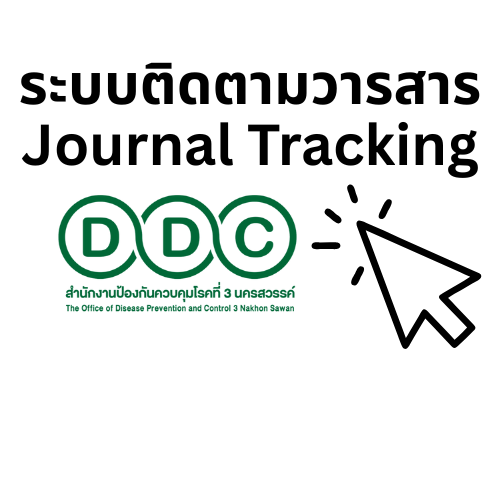การพัฒนารูปแบบการเฝ้าระวัง ป้องกันและควบคุมโรคติดเชื้อ COVID-19 จังหวัดพิจิตร
คำสำคัญ:
การพัฒนารูปแบบ , การเฝ้าระวัง , ป้องกันและควบคุมโรค , โรคติดเชื้อไวรัสโคโรนา 2019บทคัดย่อ
การวิจัยเชิงปฏิบัติการแบบมีส่วนร่วม รูปแบบการศึกษาแบบผสานวิธี มีวัตถุประสงค์การวิจัยสองประการคือ ประการแรกเพื่อพัฒนารูปแบบการเฝ้าระวัง ป้องกันและควบคุมโรค และประการที่สองเพื่อพยากรณ์ปัจจัยที่ส่งผลต่อพฤติกรรมการป้องกันโรคโควิด 2019 ดำเนินการศึกษา 3 ขั้นตอนดังนี้ ขั้นตอนที่ 1 ศึกษาสภาพการณ์ และปัจจัยที่ส่งผลต่อพฤติกรรมการเฝ้าระวัง ป้องกันและควบคุมโรค กลุ่มตัวอย่างคือตัวแทนครัวเรือนที่มีอายุ 20-60 ปี จำนวน 960 คน สุ่มตัวอย่างแบบหลายขั้นตอน เก็บข้อมูลด้วยแบบสอบถาม ขั้นตอนที่ 2 การศึกษาเชิงคุณภาพด้วยวิธี Focus Group จำนวน 2 กลุ่ม รวม 60 คนและขั้นตอนที่ 3 ประเมินผลรูปแบบที่สร้างขึ้นและการพัฒนา เก็บข้อมูลด้วยแบบสอบถาม วิเคราะห์เปรียบเทียบค่าเฉลี่ยก่อน และหลังการดำเนินการ ผลการศึกษา ปัจจัยพยากรณ์ที่ส่งผลต่อพฤติกรรมได้แก่ เพศ ช่วงอายุ ระดับการศึกษา และการรับรู้ความสามารถตนเอง (P-value= <0.05) รูปแบบการเฝ้าระวัง ป้องกันและควบคุมโรคที่พัฒนาขึ้น 9 ประเด็น คือ 1)เรื่องการให้องค์ความรู้ผ่านสื่อต่างๆ ทุกช่องทาง และทำซ้ำๆ 2)การพัฒนาศักยภาพผู้นำ 3)การได้รับรู้รับทราบข้อมูลสถาณการณ์ของโรคและความรุนแรงของโรคอย่างตรงไปตรงมา 4)การสร้างกฎ ระเบียบวินัยในชุมชน 5)การจัดบริการจากเจ้าหน้าที่สาธารณสุขทั้งในทุกระดับ 6)การจัดบริการสำหรับผู้ป่วยเรื้อรังในชุมชน 7)การอำนวยความสะดวกสำหรับการเข้ารับวัคซีน 8)การจัดการสถานที่กักกันผู้ป่วย ผู้สัมผัสโรค ในระดับหมู่บ้าน และตำบล 9)การตั้งด่านสแกนผู้เดินทางจากต่างถิ่นเข้าหมู่บ้าน เป็นผลให้เกิดประสิทธิภาพในป้องกันและควบคุมโรคได้อย่างดีเยี่ยม และ ประเมินผลเปรียบเทียบค่าเฉลี่ยปัจจัยและพฤติกรรมก่อนและหลังการดำเนินการพัฒนาระบบ พบว่าคะแนนเฉลี่ยพฤติกรรมสูงกว่าอย่างมีนัยสำคัญทางสถิติ (P-value < 0.05) ดังนั้น ควรส่งเสริมให้มีการรณรงค์ และพัฒนาการสื่อสารให้ประชาชนมีการรับรู้โอกาสเสี่ยง รับรู้ความรุนแรง รับรู้ประโยชน์ของการปฏิบัติ รับรู้อุปสรรคของการปฏิบัติ และเน้นหนักการรับรู้ความสามารถตนเองต่อการป้องกันการติดเชื้อโควิด–19 แก่ประชาชนเพิ่มมากขึ้นเพื่อส่งให้ประชาชนมีพฤติกรรมในการเฝ้าระวัง ป้องกันและควบคุม โรคติดเชื้อโควิด-19 ได้เหมาะสมขึ้น
เอกสารอ้างอิง
Worldometer 2021. COVID-19 Coronavirus pandemic. [Internet]. 2021. [Cited 2021 June 19] available from: https://www.worldometers.info/coronavirus/.
กรมควบคุมโรค กระทรวงสาธารณสุข. สถาณการณ์โรคติดเชื้อโควิด-19 ในประเทศไทย. [อินเทอร์เน็ต]. นนทบุรี: [วันที่อ้างถึง10 มิถุนายน 2564]. เข้าถึงได้จาก: https://ddc.moph.go.th/viralpneumonia/.
Wayne. W.D. Biostatistics: A Foundation of Analysis in the Health Sciences. John Wiley&Sons, Inc. 1995; 177-178.
Pender, N.J., Murdaugh, C.L. & Parsons. Health Promotion in Nursing Practice. [Internet]. 2006. [Cited 2021 June 19] available from: https://www.gotoknow.org/posts/115422.
Cronbach, L.J. Coefficient alpha and the internal structure of tests. Psychometrika. 1951; 16 (3): 297-334.
แพรพรรณ ภูริบัญชา, เชิดพงษ์ มงคลสินธุ์ และปวีณา จังภูเขียว. การพัฒนารูปแบบการเฝ้าระวัง ป้องกันและควบคุมโรคติดเชื้อไวรัสโคโรนา 2019 ในพื้นที่เฉพาะ (Bubble and Seal) ของสถานประกอบการ จังหวัดมหาสารคาม. วารสารวิชาการสาธารณสุข. 2565; 31(1): 48-62.
บุญฤทธิ์ วงศ์เชวงทรัพย์, ปริมประภา ก้อนแก้ว, บรรเจิด สืบพงศ์ตระกูล, กิตติคุณ ยศบรรเทิง และกู้เกียรติ ก้อนแก้ว. การพัฒนาระบบการป้องกันและควบคุมโรคไวรัสโคโรนา-2019 ในเขตพัฒนาเศรษฐกิจพิเศษ ชายแดนไทย-เมียนมาร์. [อินเทอร์เนต]. 2564 [วันที่อ้างถึง15 มิถุนายน 2565]. เข้าถึงได้จาก: https://bit.ly/42shklQ.
ฉวีวรรณ ศรีดาวเรือง, จิราพร วรวงศ์, เพ็ญนภา ศรีหริ่ง, รัตน์ดาวรรณ คลังกลาง, จุฬารัตน์ ห้าวหาญ, ดิษฐพล ใจซื่อ, และคณะ. การดำเนินงานเฝ้าระวัง ป้องกันและควบคุมโควิด-19 ในชุมชนโดยอาสาสมัครสาธารณสุขประจำหมู่บ้าน ในภาคตะวันออกเฉียงเหนือของประเทศไทย. วารสารวิจัยระบบสาธารณสุข สถาบันวิจัยระบบสาธารณสุข. 2565; 16(2): 151-68.
บัณฑิต เกียรติจตุรงค์. กาพัฒนารูปแบบการมีส่วนร่วมของภาคีเครือข่ายในการป้องกันและควบคุมโรคติดเชื้อไวรัสโคโรนา 2019 (COVID-19) อำเภอเมืองยาง จังหวัดนครราชสีมา. วารสารสำนักงานสาธารณสุขขอนแก่น. 2564; 3(2): 193-206.
รัชนี เตรียมอุดม, ศิริลักษรณ์ ใจช่วง,กนกพร ไทรสุวรรณ์, พเยาวดี แอบไธสง และบารเมษฐ์ ภิราล้ำ.การพัฒนารูปแบบการป้องกันโรคติดเชื้อไวรัสโคโรนา 2019 โดยการมีส่วนร่วมของชุมชนในจังหวัดนครพนม. วารสารสำนักงานป้องกันควบคุมโรคที่ 7 ขอนแก่น. 2564; 28(1): 1-13.
กวินลดา ธีระพันธ์พงศ์, จุฑาทิพย์ นามม่อง. ปัจจัยที่มีความสัมพันธ์ต่อพฤติกรรมการป้องกันการติดเชื้อไวรัสโคโรนา 2019 (โควิด-19) ของพนักงานในโรงงานขนาดใหญ่แห่งหนึ่ง อำเภอกระทุ่มแบน จังหวัดสมุทรสาคร. วารสารพยาบาลศาสตร์ มหาวิทยาลัยสยาม. 2564; 22(23): 10-20.
ดาวน์โหลด
เผยแพร่แล้ว
รูปแบบการอ้างอิง
ฉบับ
ประเภทบทความ
สัญญาอนุญาต
ลิขสิทธิ์ (c) 2023 วารสารโรคและภัยสุขภาพ สำนักงานป้องกันควบคุมโรคที่ 3 จังหวัดนครสวรรค์

อนุญาตภายใต้เงื่อนไข Creative Commons Attribution-NonCommercial-NoDerivatives 4.0 International License.
ประกาศเกี่ยวกับลิขสิทธิ์
|
บทความที่เผยแพร่ในวารสารโรคและภัยสุขภาพสำนักงานป้องกันควบคุมโรคที่ 3 จังหวัดนครสวรรค์ ถือว่าเป็นผลงานทางวิชาการหรือการวิจัย และวิเคราะห์ ตลอดจนเป็นความเห็นส่วนตัวของผู้เขียน ไม่ใช่ความเห็นของสำนักงานป้องกันควบคุมโรคที่ 3 จังหวัดนครสวรรค์ หรือกองบรรณาธิการแต่ประการใด ผู้เขียนต้องรับผิดชอบต่อบทความของตน |
นโยบายความเป็นส่วนตัว
|
ชื่อและที่อยู่ อีเมล์ ที่ระบุในวารสารโรคและภัยสุขภาพสำนักงานป้องกันควบคุมโรคที่ 3 จังหวัดนครสวรรค์ จะใช้เพื่อระบุตามวัตถุประสงค์ของวารสารเท่านั้น และจะไม่นำไปใช้สำหรับวัตถุประสงค์อื่น หรือต่อบุคคลอื่น |









